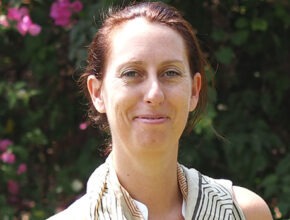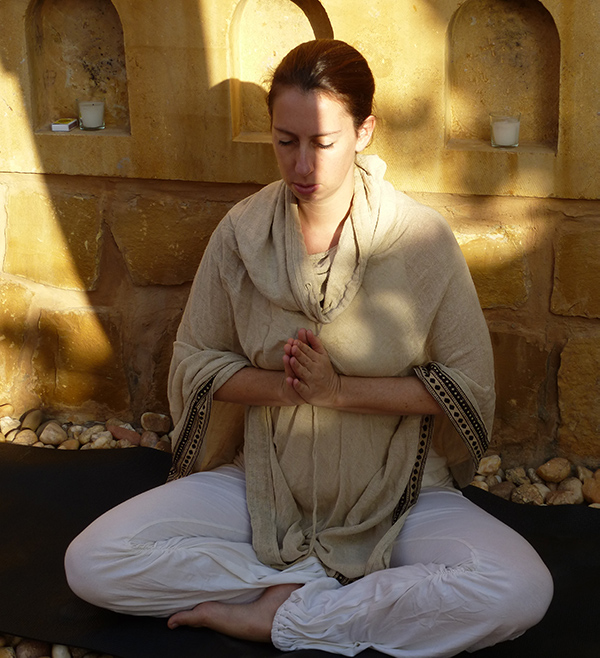
An integral part of yoga as transformation, as a method of creating conscious change, starts with self inquiry and setting an intention. In yoga, we are invited to look inside and to create a Sankalpa – the simplest translation is ‘conscious intention’ or maybe even ‘heart’s desire’ – it is deeper than a statement of purpose, it is an affirmation of who we are.
Right now looking ahead can be challenging. Making a conscious intention can be very empowering and grounding as we deal with the many changes that 2020 may have brought. We might have seen different sides to us surface during 2020 – fears and doubts may have bubbled up or indeed we might have noticed a courage that we did not know we had. Right now it might also be difficult to think to the future – it might be challenging to think ahead and plan as we might have seen goals and destinations change.
Working with a Sankalpa at this time might be of even more importance or even more profound – as it encourages us to be accepting of ourselves right now in the moment.
So this is a crucial difference between a Sankalpa and a resolution. It is important that we state our Sankalpa in the present tense – it is affirming what we already are and not what we wish to be or wish to achieve.
“Sankalpas foster focus, motivation, determination, patience, and perseverance” says Richard Miller. “All qualities that enable you to develop, sustain, and deepen a meditation practice.”
We are familiar with superficial intentions like New Years Resolutions, but how do we cultivate a conscious intention that cements our life’s purpose?
The motivation or language of a New Years Resolution is often about change – we see the New Year as a time to shed old habits and behaviours and ring in the new. It is great to embrace change, but we need to be conscious with our language.
So for example, whenever our resolution starts “I want” or “I wish” it is putting it off into the future and sowing a seed that we are not good enough as we are right now. ‘I will’ or ‘I want’ cements a belief pattern that we are not good enough – that if we could just stop smoking, wear a smaller dress size or do yoga every day that life would be perfect. We can easily fall into self-judgment if we focus on our toxic behaviours – so it’s time to appreciate both what we already have and how we might feel if we were to let go of the toxic behaviour or limiting belief.
Meditation helps us see ourselves clearly and practice non-judgment towards ourselves and others. If a judgment or anxiety arises, our practice of meditation can help us ground our awareness in the present moment, the breath or a felt-sense in the body, rather than getting caught up in the mind’s narrative or an anxious feeling at the solar plexus.
When we practice Self Inquiry (atma vichara) we give ourselves time to get the root of a story or limiting belief that we carry around – if we take time, we might start to see the origin of the story or maybe who we inherited that value or belief system from in our family.
The art of Self `Inquiry is to see ourselves clearly without judgment – and even to witness our judgments without judgment if you like. So often when we look inside, we get caught in the analysis or judgment of the story or of our behaviour. As we untangle the story, try not to get stuck in the details, the attached feelings or the blame – practice non-judgment of yourself as the narrator of the story and non-attachment to the story itself (naturally this is an art in itself – so do not judge yourself each time you do immerse yourself in the story). It’s a lifetime’s work as there are layers of the narrative, take small steps

Read this through first – then practice the ‘Aham’ meditation below.
New Years Resolutions are a good place to start when creating your own Sankalpa – we can reframe certain statements/ desires and see the true motive or awareness rooted in them. Start with a typical New Years Resolution like:
• I want to give up eating chocolate/ smoking…. for example.
Remember the ‘I want’ pushes the focus into the future and does not acknowledge what we are in the present moment. The language of the NY resolution is probably loaded in judgment of what we are in the present moment – so we need to get to the truth of it.
And then, what if we are focus on ‘giving up something’ then likely we will see ourselves in terms of the person that has ‘needed’ that behaviour to survive or get through (and then potentially we will see and focus on our weakness). And quite often we will see that then we need to ‘fix’ ourselves in some way.
Instead, ask yourself how would you feel if you did not have that behaviour (or perhaps belief) in your life? How would you feel?
Maybe it would simply be that you would feel healthier – and if you were to feel healthier would you feel energized, empowered, more whole, more connected, liberated?
Whether it’s the behaviour, the addiction, the judgment or the need to change – there is usually a deeper need for self understanding or self care/ nourishment.
Your Sankalpa should be in the present tense – not looking to the future.
“Sankalpas are stated in the present tense. That’s because a sankalpa is not merely a wish, or even a statement of purpose. It’s an articulation of direction that brings your goal into the present moment goal. What gives a sankalpa its strength is that it assumes the outcome is not just certain, but has already occurred.”. Sally Kempton
This means that our fundamental nature – our limitless love – our limitless energy is untouched by our conditioning. We are so much bigger than who we think we are. If we drop the story of needing to change – focusing on what we already are at our core – a deep shift in perception can occur.
Although many teachers work with longer Sankalpa statements – I have found that creating a simple three word Sankalpa is useful – it limits the language (and language can often tie us in knots), so…
I recommend that our Sankalpa is simply… I am….. (and then add the word that most sums up how you think you would feel if you let go of self limiting beliefs, addictions or toxic behaviours)
• For example, I am Whole.
How simple is that? It sums up that I am everything that I need to be right now. So notice, it could read ‘I want to feel Whole’ – but by getting rid of the ‘I want’ – we acknowledge our wholeness right now. Wiith time, we see that our conditioning, our thoughts, our stories and judgments just cloud what we are at our core – they are a mental construct or the emotional baggage that we carry around and now what we essentially are.
Or maybe you keep it simply at those two words… I am (with no qualifier at all).
So grab a pen and paper and jot down some thoughts and feelings. Play around with the idea of a New Years Resolution (as a guide if that helps).
• Look at the language – Are there any ‘ I wants’ – what words in there might be a judgment?
• If you get stuck at any time, practice the ‘Aham’ meditation (see below). Meditation helps us see ourselves clearly.
• And this Sankalpa can be a work in progress (some people take years to come up with their life times’s Sankalpa – so no pressure. This can be a Sankalpa for this month or this year – it can evolve with time.
Key elements in creating your Sankalpa
• Keep it simple (I recommend just 3 words)
• State it in the present tense
• You might like to commit your Sankalpa to paper – write it in a beautiful card or stick in on a mirror.
Creating a Sankalpa is about awakening ourselves to our infinite possibilities and understanding our boundless potential. An intention creates focus – both an inner focus and greater self awareness and a conscious direction to move forward with.
Sit comfortably on the floor or chair resting your hands on the knees – backs of the hands resting on the knees, palms to the sky.
Eyes are closed or open in a soft gaze.
Allow your awareness to follow the rise and fall of your breath – tune into the rhythm of your breath. You do not need to change your breath in anyway, just tuning into the ebb and flow, the inhalation and exhalation, the sensation of receiving the breath and as you exhale feel a softening in your shoulders, a softening in the face, a softening in the hands – allowing yourself to let go of anything you have been holding onto.
Mantra – Start to silently repeat the mantra ‘AHAM’ – vibrate ‘ah’ silently on the inhalation and ‘ham’ on the exhalation. ‘Aham’ means ‘I am’ – every breath we affirm ‘I am’, with no labels, no judgments – simply ‘I am’ with every breath affirming your presence, your being. (Continue for 5 minutes – you can always extend this if you wish).
When you are ready to finish, allow the mantra to dissolve and draw your awareness again to the sensation of your in-breath coming and going at the nostrils, feel the coolness of the inhalation and the slight warming nature of the outbreath. Feel the breath rise and fall in the shoulders and upper back – deepen your breath and when you are ready slowly open your eyes.
You can follow Viriam’s blog at em-bodied.org or check out online workshop schedule at Himalaya Yoga Valley Online to sign up for one of Viriam’s classes.
 Book A Call With Us
Book A Call With Us
Please wait while you are redirected to the right page...